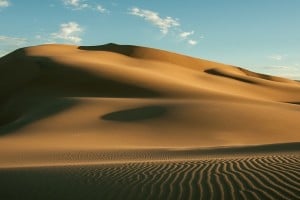 With water scarcity becoming more and more of a serious global issue virtually by the day, and the threat of more wars being fought over access to fresh water, it is more important than ever that we come up with as many innovative ideas of collecting fresh water as possible.
With water scarcity becoming more and more of a serious global issue virtually by the day, and the threat of more wars being fought over access to fresh water, it is more important than ever that we come up with as many innovative ideas of collecting fresh water as possible.
Past conflicts have been fought over land or religion, but that is changing and current and future conflicts will be fought over the elixir of life, fresh water. In Asia for instance, the Tibetan plateau is the source of 10 major river systems that supply around 85% of Asia’s and nearly half of the world’s population with fresh water – this is why China’s control of Tibet is so strategic.
In the Middle East, various countries are diverting water from neighbouring countries, creating palpable tension in these regions, and in Africa nearly 1 billion people are affected by water scarcity. The people of Ethiopia and those in neighbouring countries alone spend approximately 40 billion hours annually trying to find and collect water, which is often contaminated with chemicals, animal waste, or infectious bacteria, making it undrinkable.
While various companies, individuals and organisations have come up with solutions to make local contaminated water drinkable, including using devices that purify water such as the life straw and converting toilet water into drinking water, this can only be done where there is water available in the first place. Unfortunately these innovations do nothing in areas where fresh water is unavailable or scarce.
What is needed is a workable invention that actually creates or collects water other than desalination, where sea-water is turned into drinking water, as this is generally too expensive for poorer countries.
Industrial designer Arturo Vittori and his colleague Andreas Vogler have recently come up with a very innovative method of literally pulling fresh water from thin air. It is an inexpensive and easy to assemble30 foot tall structure shaped like a vase and covered with a mesh net made of nylon which hangs inside the tower and collects droplets of dew.
The Warka Water tower, named after an Ethiopian fig tree, collects the droplets that are formed as cold air condenses in a container at the base of the tower, and each tower can supply in excess of 110 litres of water per day.
Buy water cooler and rent water cooler from Living-Water. Get bottled water cooler and water cooler accessories in London.





